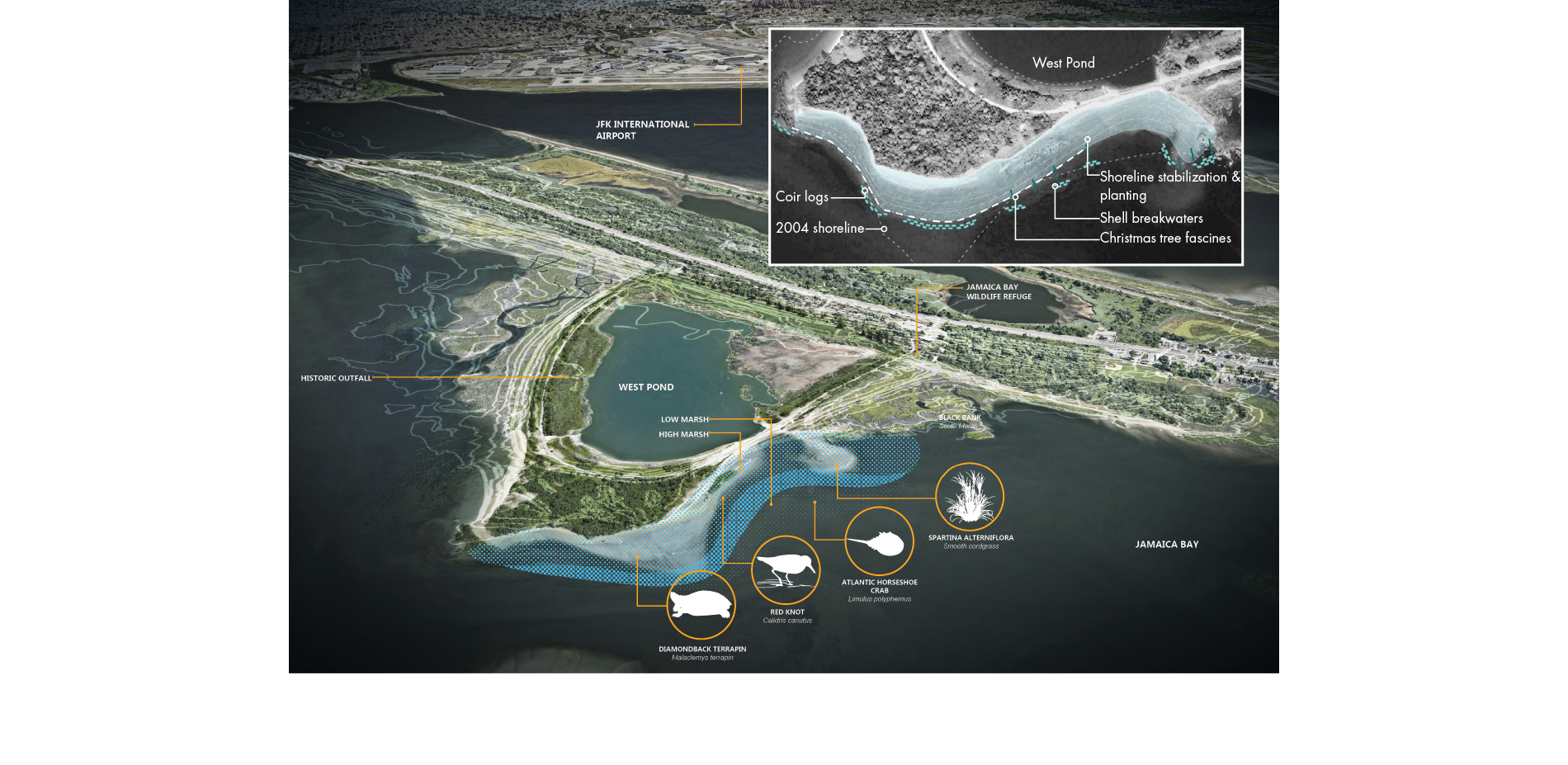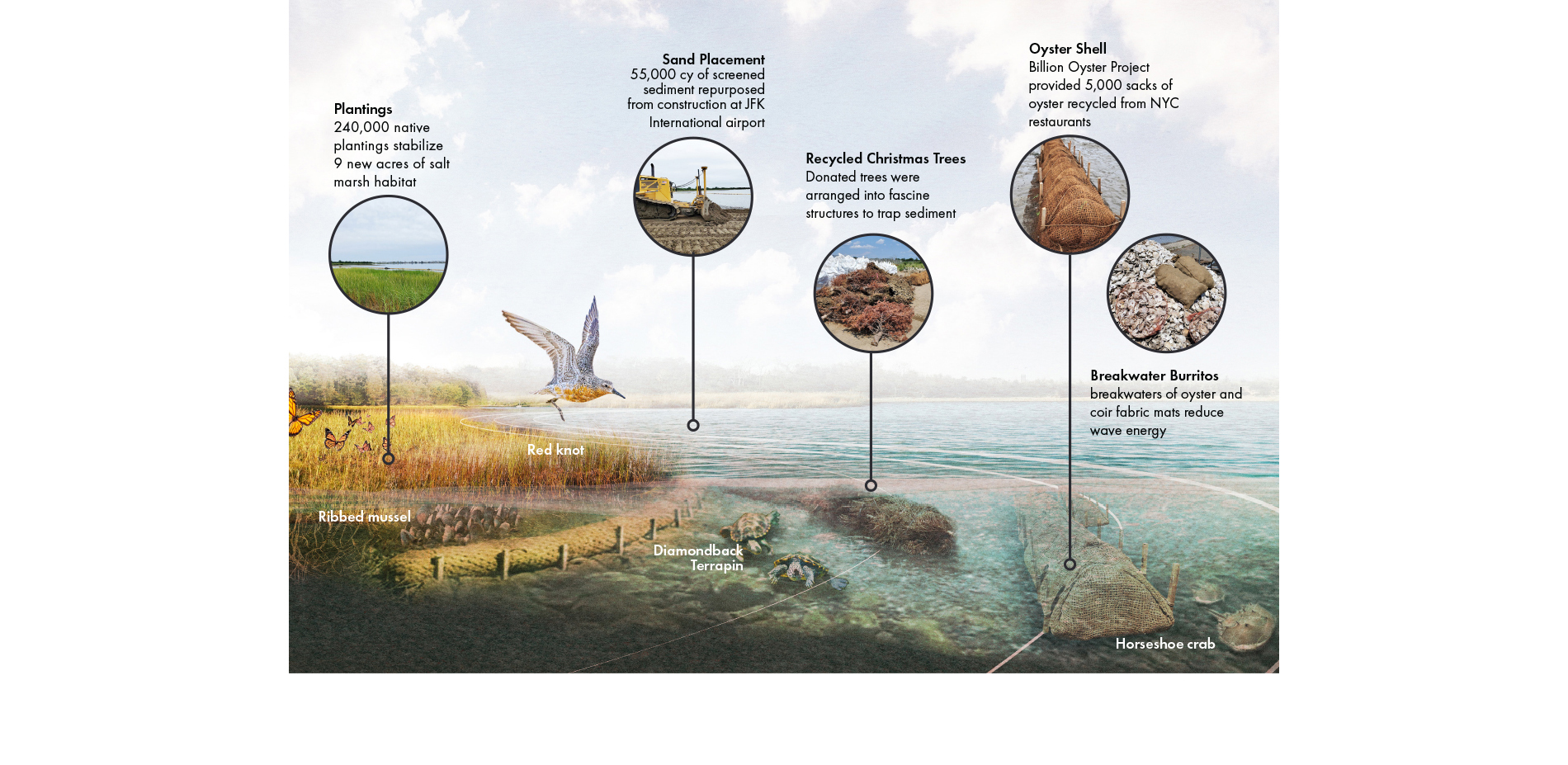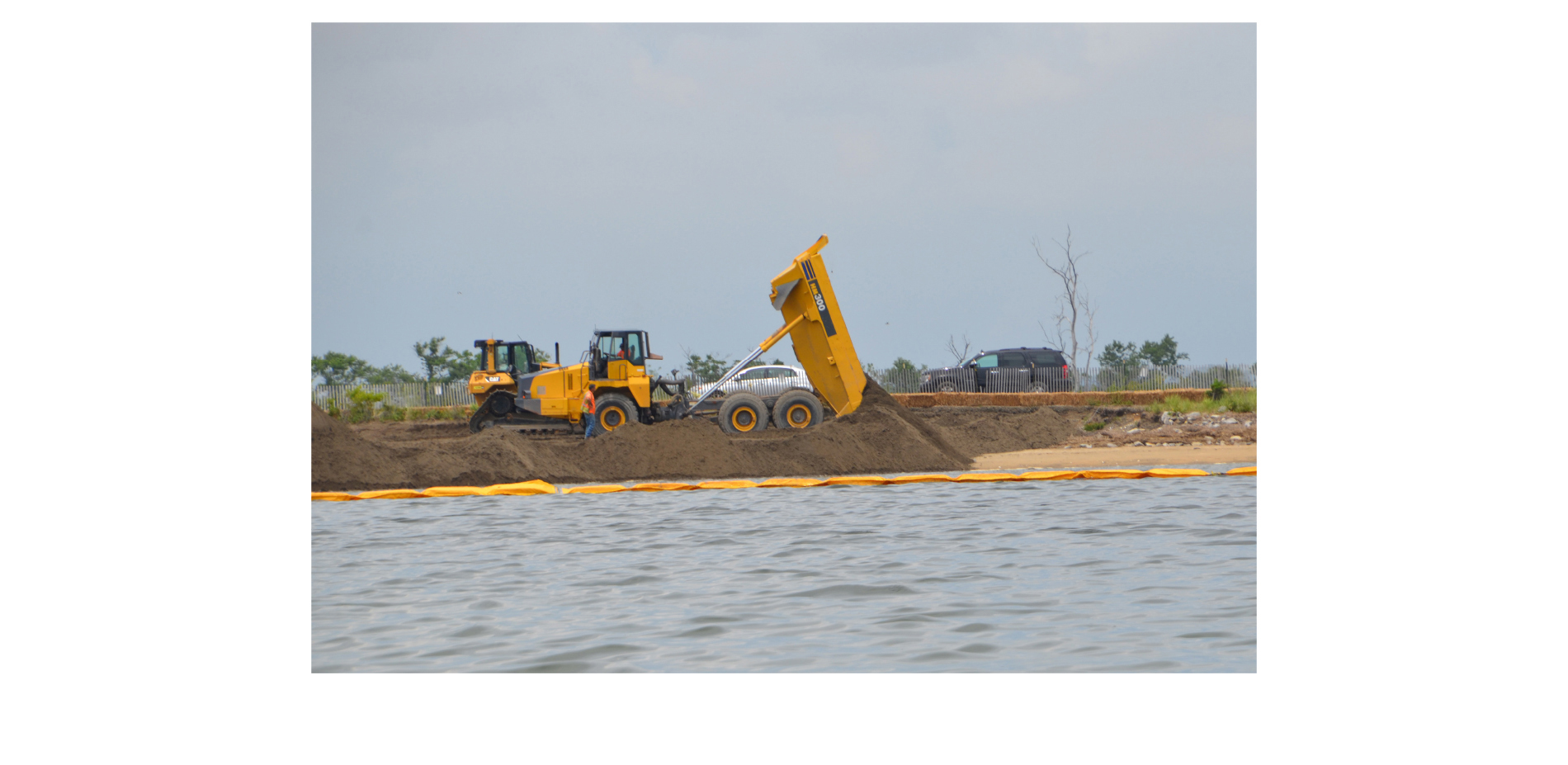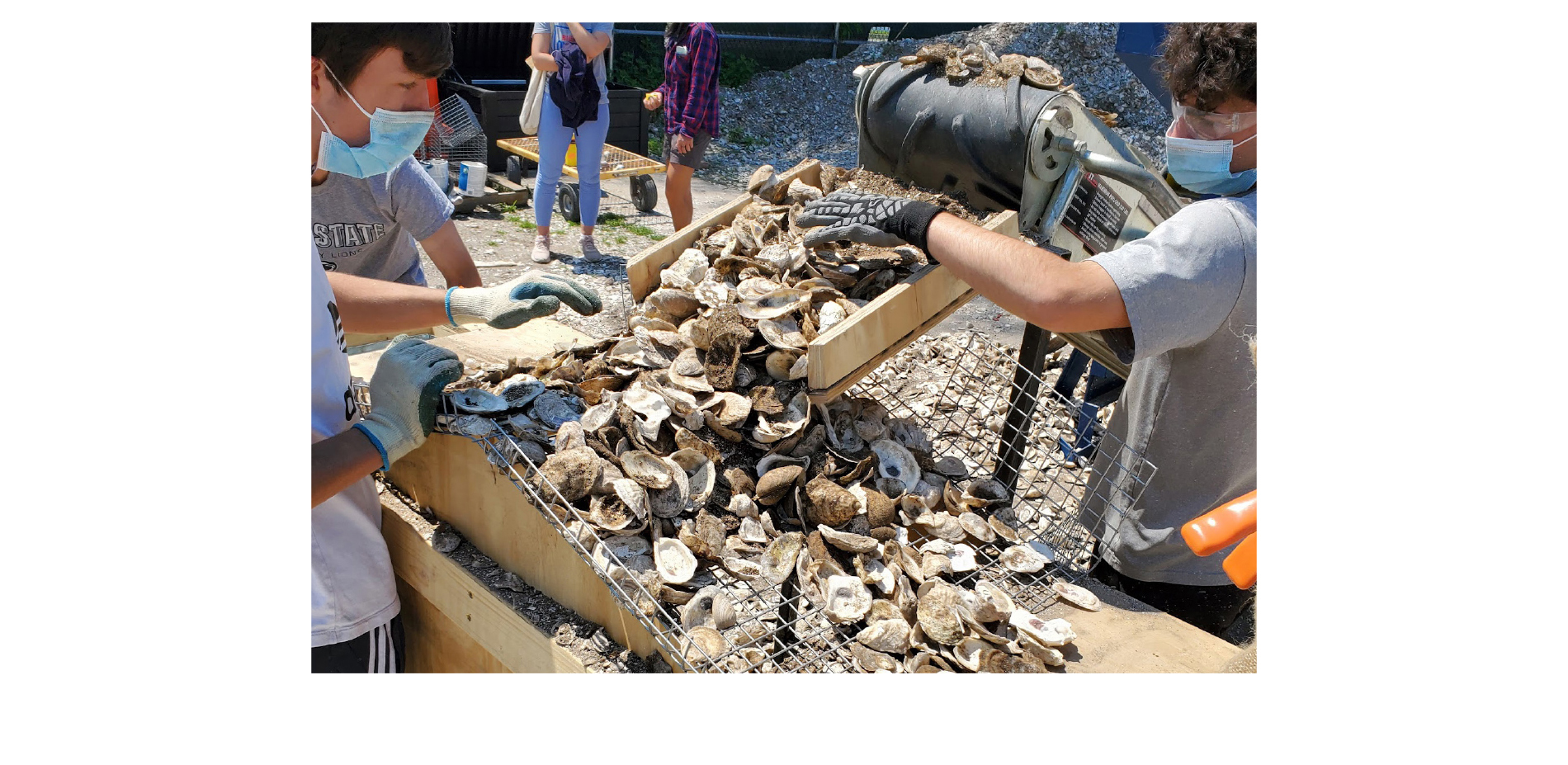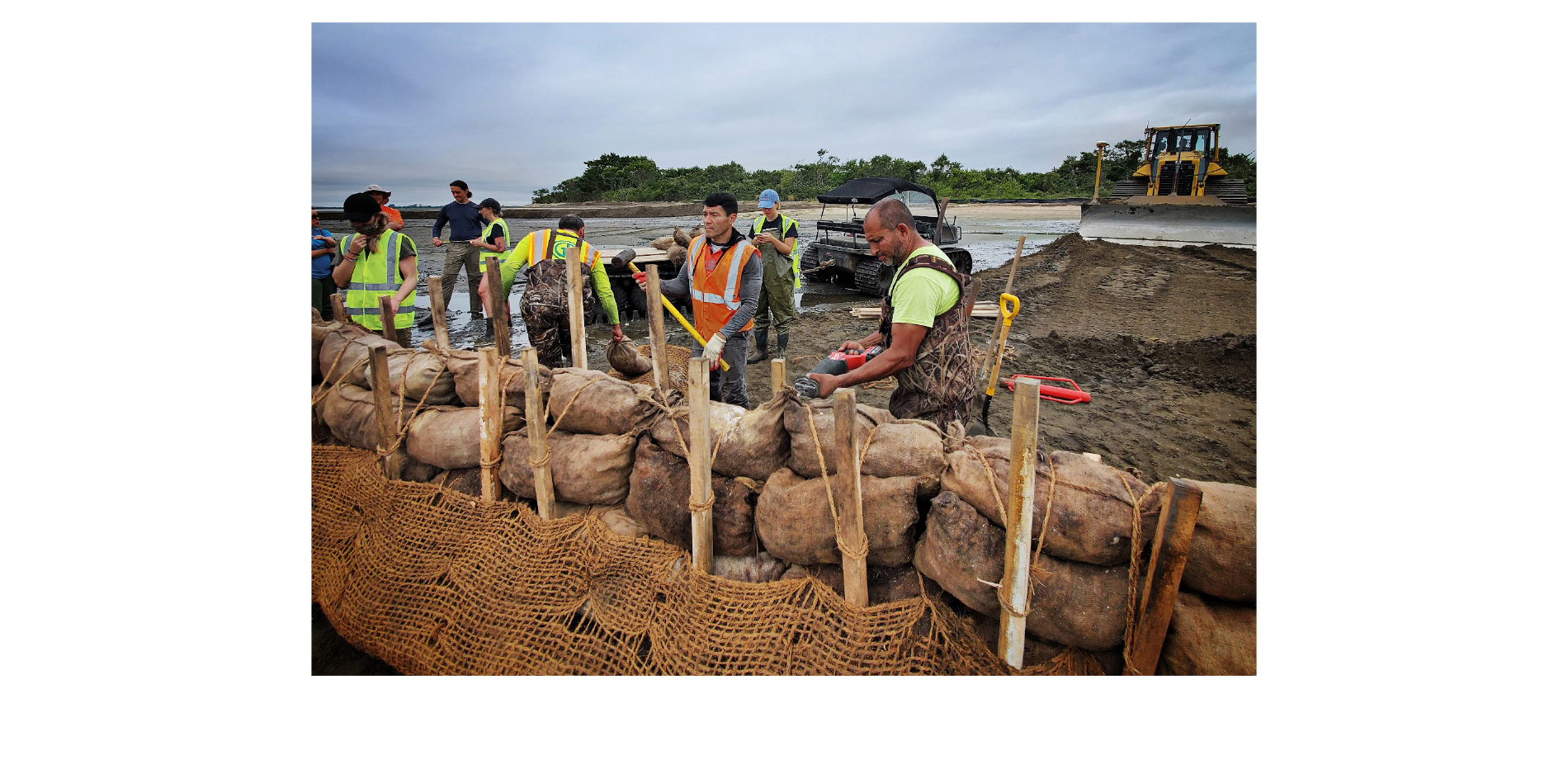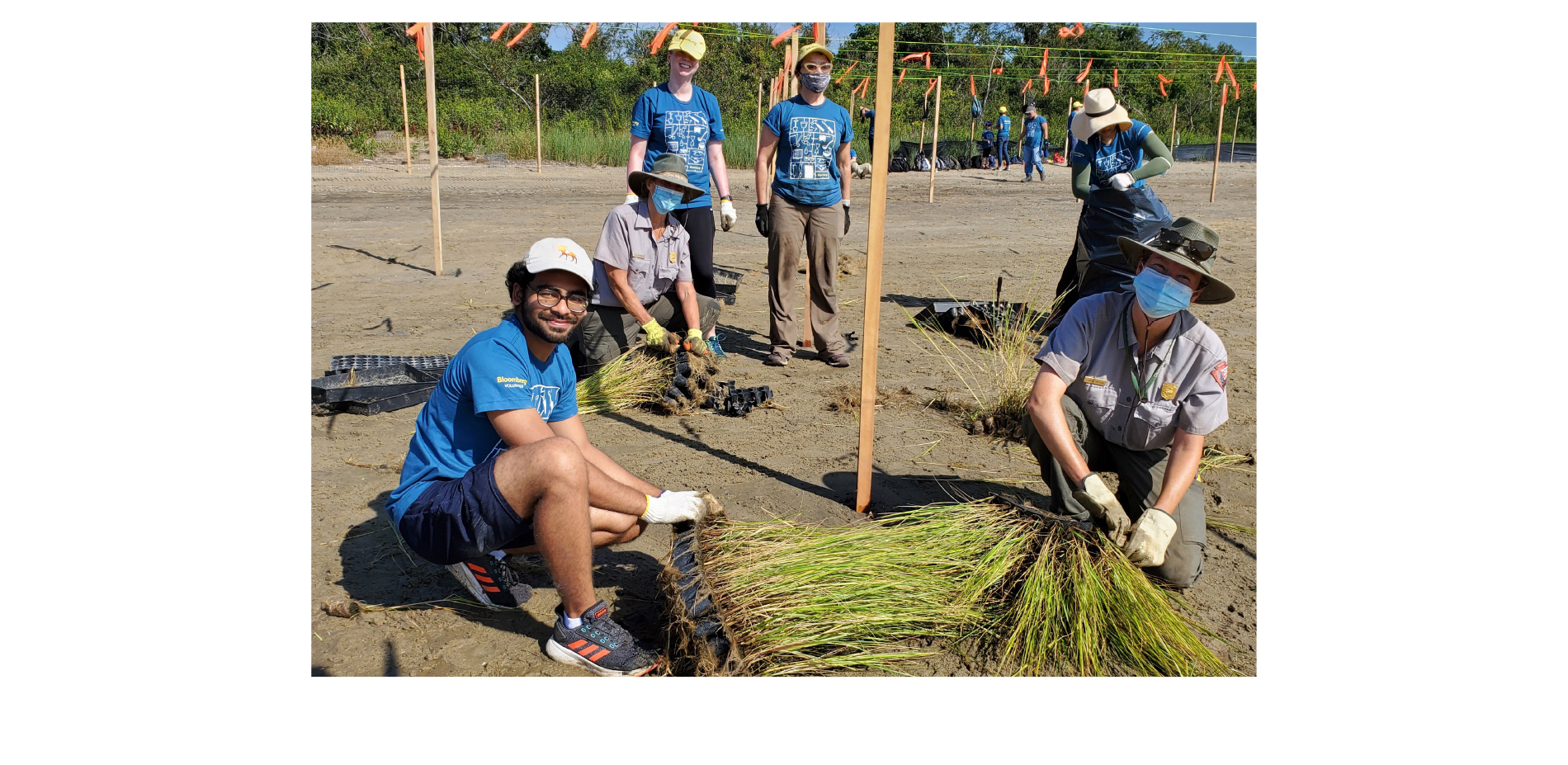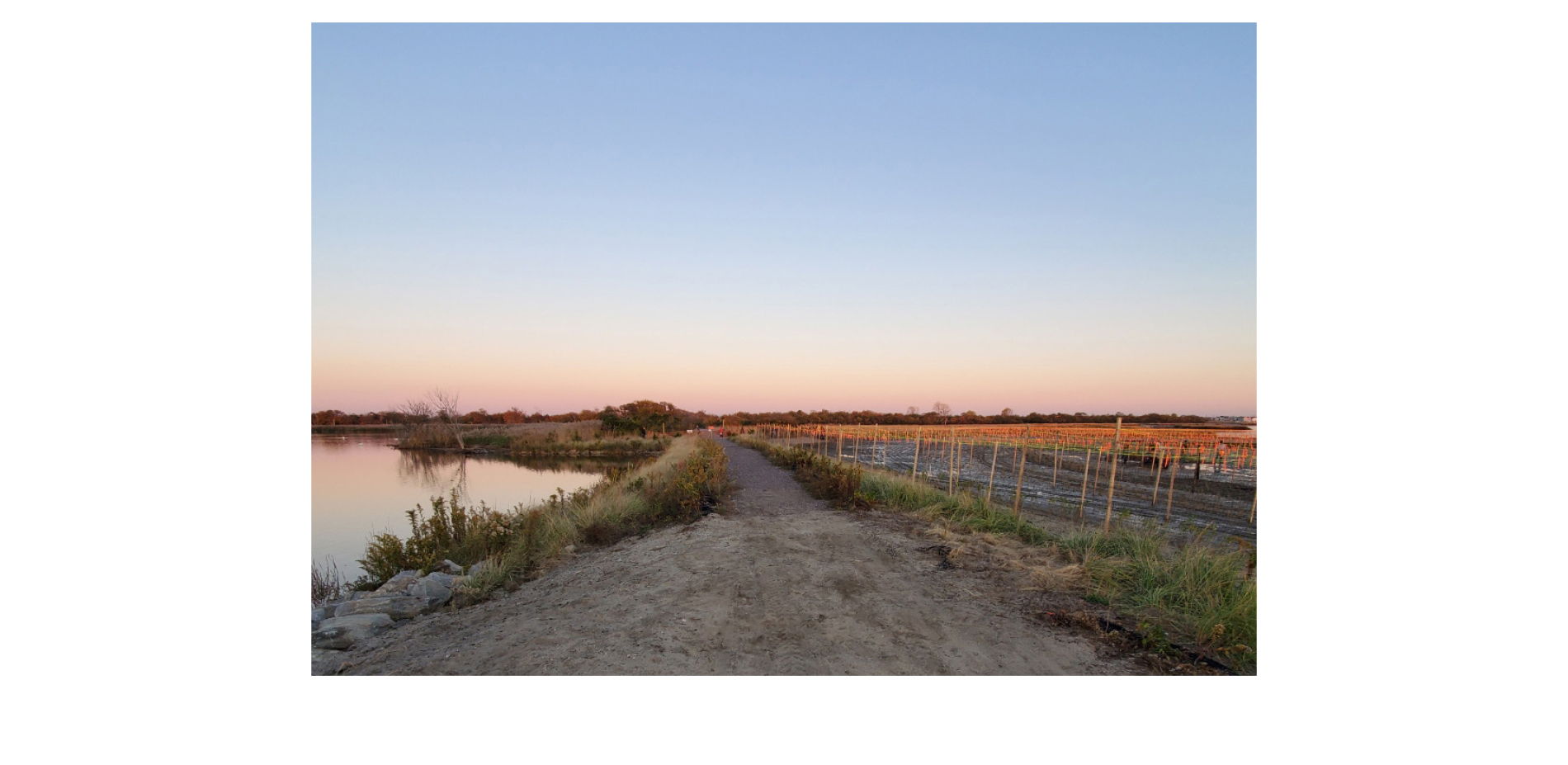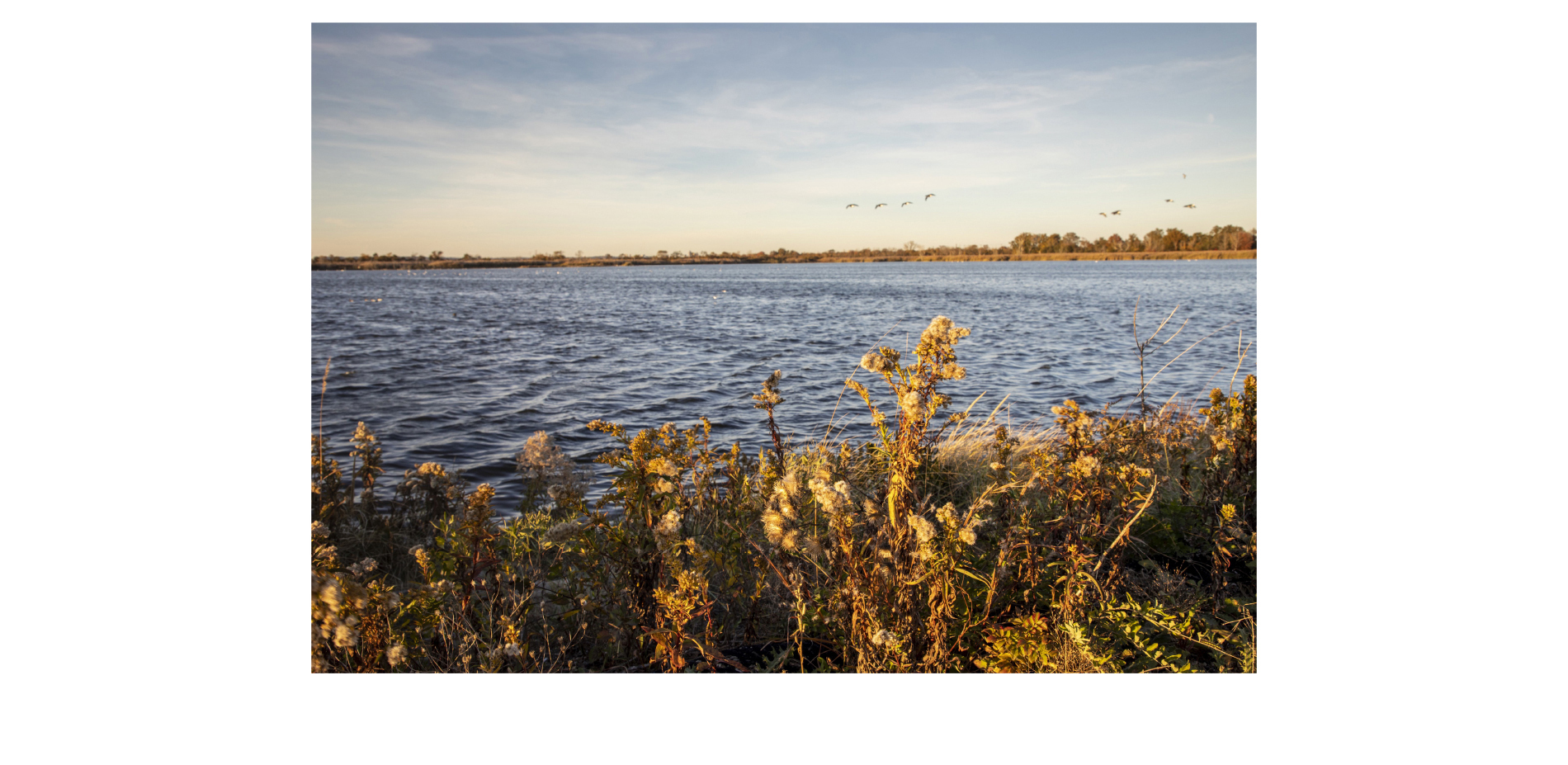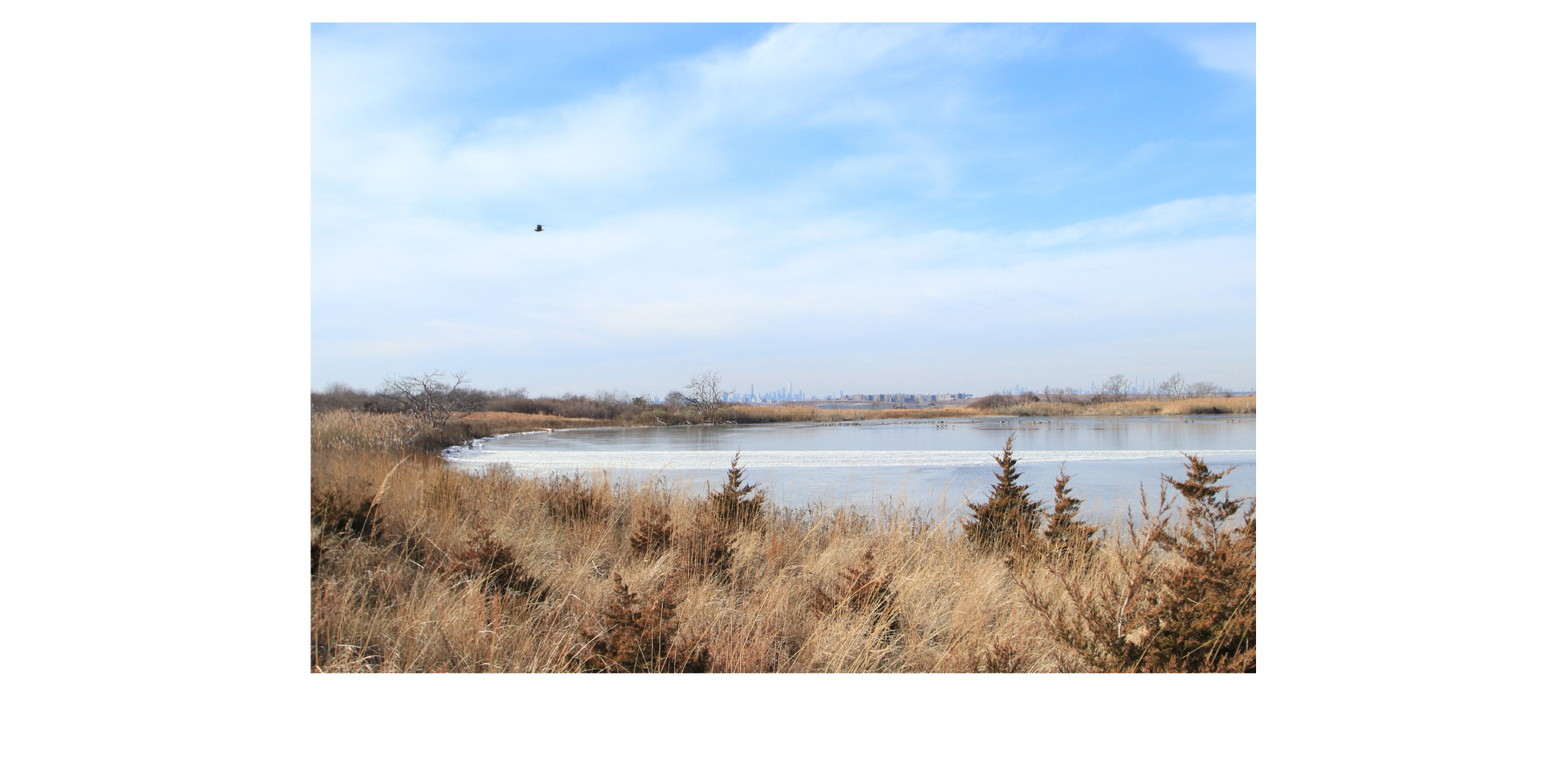West Pond: Living Shoreline
Honor Award
General Design
Brooklyn and Queens, New York, United States
Dirtworks Landscape Architecture P.C
Client: Jamaica Bay Rockaway Parks Conservancy and National Park Service
With a team of marine engineers, ecologists, and community advocates, the designers planned a 2,400-foot living shoreline, creating over 9 acres of new habitat and restoring14 acres. Implementation strategies included oyster shell breakwater structures, recycled Christmas trees for fascines, and construction fill screened into clean sediment for the shoreline and habitats. The jury remarked on the “purposefully understated design that didn’t clutter the beautiful open spaces and allowed for healing and regeneration of soils.”
- 2022 Awards Jury
Project Credits
Britt Zuckerman, Senior Landscape Architect
Cate Collinson, Ecologist
Mary Paist-Goldman, Engineer
Joe Giordano, Contractor
Danielle Bissett, Billion Oyster Project: Director of Restoration
Project Statement
New York City has lost over 90% of its freshwater wetlands in the past century. One of the most important remaining wetland areas is Jamaica Bay, part of Gateway National Park. West Pond, a critical freshwater lagoon within the larger Jamaica Bay ecosystem, is a resource of extraordinary cultural and ecological value. West Pond shares the broader challenges of Jamaica Bay: sediment starvation, marsh accretion outpaced by sea level rise, vegetation compromised by nutrient loading, and increasing storm severity.
Constructed in 1953 by NYC Parks to improve habitat diversity, West Pond became a beloved community asset and vital freshwater source for migratory birds along the Atlantic Flyway. In the aftermath of Superstorm Sandy a narrow barrier was breached, mixing the pond’s fresh water with the bay’s saltwater. In response, our West Pond Living Shoreline project considered the complex interplay of a shifting estuarine ecosystem alongside the National Park Service’s programmatic and accessibility goals. It leverages Jamaica Bay’s dynamic natural systems to reestablish, protect and sustain West Pond’s critical marsh habitat.
Project Narrative
In 2012, Superstorm Sandy tore through West Pond, a vital 45-acre freshwater wetland servicing 70% of migratory birds along the Atlantic Flyway. This large pond is a key component of the larger Jamaica Bay wetland estuary, a major part of Gateway National Park. This priceless natural resource is located only 12 miles from the densest areas of Manhattan.
Sandy’s massive storm surge, estimated at 10 feet high, pushed across the narrow path separating the freshwater wetland from the salty bay waters, washing it away completely. The freshwater West Pond filled with salt. Maple and birch trees planted decades ago along its banks were killed almost instantly. Migratory animals lost a vital water source and had to scramble to find alternative sources of fresh water along their route. Habitats were destroyed and the community who loves the area was devastated.
The West Pond Living Shoreline project leverages the existing natural systems of Jamaica Bay to protect and regenerate the pond’s bayside edge while supporting Gateway National Park’s ongoing efforts to protect critical habitats of threatened species and migratory birds. Leading a team of marine engineers, ecologists, and community advocates, we oversaw design and construction of this initiative in only 18 months.
Our dedicated design team planned a 2,400-foot living shoreline, creating over 9 acres of new habitat and restoring 14 acres. Along the formerly breached dam edge, a constellation of strategies – breakwater structures, additional sediment, marsh plantings and erosion control – coalesce to attenuate wave action, improve water quality, and support the reemergence of mudflats and saltmarsh. This living framework supports the immediate need to restore the pond edge while adapting this vulnerable ecosystem to the challenges of climate change.
Our team studied a variety of possible approaches, including naturally occurring rib mussel communities and spat-on-shell oyster reef construction. Due to the National Park Services’ mandate against aquaculture, we determined that an oyster shell breakwater structure would be the most effective solution here.
Nimble responses to supply chain and pandemic-related disruptions required close collaboration, flexibility, and creativity. It all came down to coconut fiber. With most coconut fiber coming from Sri Lanka, a global slowdown in shipping/production forced us to consider alternative materials. Partnering with the Billion Oyster Project, we sourced recycled oyster shells from New York City restaurants, cured them in the sun for 12 months, and then packed them in locally sourced burlap bags. Due to the fact that burlap breaks down faster in high salt conditions, we developed an innovative ‘breakwater burrito’ by packing the burlap bags, stacking them in a pyramidal structure, and then wrapping the entire 12-ft-long assembly with coir fabric. These breakwater structures, together with recycled Christmas tree fascines, attenuate wave action, accrete sediment, and protect the newly constructed shoreline.
With resiliency and sustainability guiding the design response, we worked to source locally available sediment. Through a Beneficial Use Designation, 70,000-cubic yards of fill was repurposed from construction of the TWA Hotel at JFK International Airport. Screening this into 55,000-cubic yards of clean sediment, we established over 9-acres of new habitat and 2,400 linear feet of shoreline.
In studying the pond’s decommissioned outfall, the team determined we could reopen the structure to allow for seasonal drawdowns to accommodate migratory birds. Through CCTV footage, we discovered that by replacing portions of the vitrified clay pipe, installing a new sluice gate and duck bill valve structures, the outfall would be more than sufficient for this purpose.
Existing habitat and populations needed protection during construction. Silt sock barriers were installed for 680 breeding terrapin females. Construction crews were trained to check for terrapins who might be taking a midday nap in the shade under construction equipment. Site meetings included terrapins popping out of the water to watch construction from inside the turbidity curtain.
Daily monitoring for protected species, including Red Knots and Horseshoe Crabs, was essential to the project. Local nurseries begin growing the needed plugs for our 240,000 native plantings a year in advance. Plantings were installed in salt marsh and intertidal zones, creating a resilient ecotone between the high marsh and freshwater pond. Our client’s goals included monitoring the long-term health of the project, with a two year contract with the Jamaica Bay Science and Resilience Institute. Data-driven research will sustain and inform this living shoreline design while also tracking the health of the neighboring maritime forest, shrubland, mudflat, and lacustrine freshwater herbaceous wetlands.
Throughout the entire project, community engagement efforts included close collaboration with local environmental advocacy groups and nonprofits, including Jamaica Bay-Rockaway Parks Conservancy, Jamaica Bay Ecowatchers, The American Littoral Society, and Billion Oyster Project. Together, we brought in hundreds of volunteers over several phases of the construction. They planted Spartina alterniflora plugs, installed vibrant goose fencing markers, and helped clean up trails. The nearby Rockaway community donated Christmas trees for our erosion-control fascines, while volunteers on Governors Island packed recycled oyster shells into breakwater bags.
Protecting and sustaining West Pond is critical to the resiliency of the larger Gateway National Park ecosystem. Equally critical is protecting and sustaining the idea of community stewardship. This multi-discipline, community-based initiative establishes an effective and vital response to our changing climate.
Products
-
Other
- Plantings; Greenbelt Nursery
- Planting: Long Island Natives
Plant List
- Spartina alterniflora SALT MARSH CORDGRASS
- Distichlis spicata SALT GRASS
- Juncus gerardii SALT MEADOW RUSH
- Spartina patens SALT MEADOW CORDGRASS
- Bolboschoenus robustus STURDY BULRUSH
- Iva frutescens MARSH ELDER
- Panicum virgatum SWITCHGRASS
- Schizachrium scoparium LITTLE BLUESTEM
- Solidago sempervirens GOLDENROD


